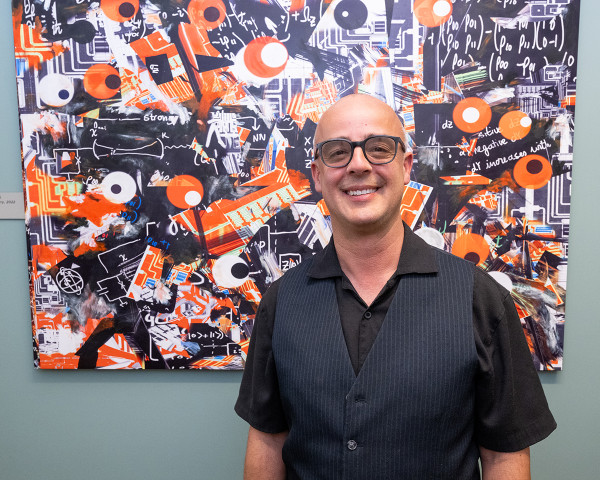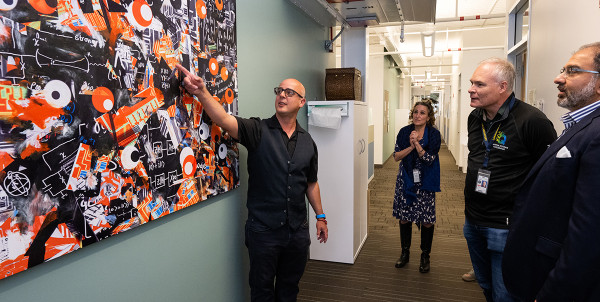For World Quantum Day on April 14, Berkeley Lab’s Computing Sciences Area (CSA) celebrated the interdisciplinary collaboration between the Advanced Quantum Testbed (AQT) at Berkeley Lab and the California-based contemporary visual artist Benjamin Arizmendi.

Visual artist Benjamin Arizmendi poses in front of his quantum-inspired artwork. (Credit: Paul Mueller/Berkeley Lab)
Arizmendi created “In Search Of Symmetry,” a mixed media composition using quantum information theory and formulas driven by cutting-edge quantum computing research and development at AQT.

Left to right: Benjamin Arizmendi, Helen Cademartori, Bert de Jong, and Irfan Siddiqi. (Credit: Paul Mueller/Berkeley Lab)
The Berkeley Lab Foundation supported the collaboration. Dan Olesen donated the painting, which is now on display in Shyh Wang Hall on the Berkeley Lab campus.
About Berkeley Lab
Founded in 1931 on the belief that the biggest scientific challenges are best addressed by teams, Lawrence Berkeley National Laboratory and its scientists have been recognized with 16 Nobel Prizes. Today, Berkeley Lab researchers develop sustainable energy and environmental solutions, create useful new materials, advance the frontiers of computing, and probe the mysteries of life, matter, and the universe. Scientists from around the world rely on the Lab’s facilities for their own discovery science. Berkeley Lab is a multiprogram national laboratory, managed by the University of California for the U.S. Department of Energy’s Office of Science.
DOE’s Office of Science is the single largest supporter of basic research in the physical sciences in the United States, and is working to address some of the most pressing challenges of our time. For more information, please visit energy.gov/science.









